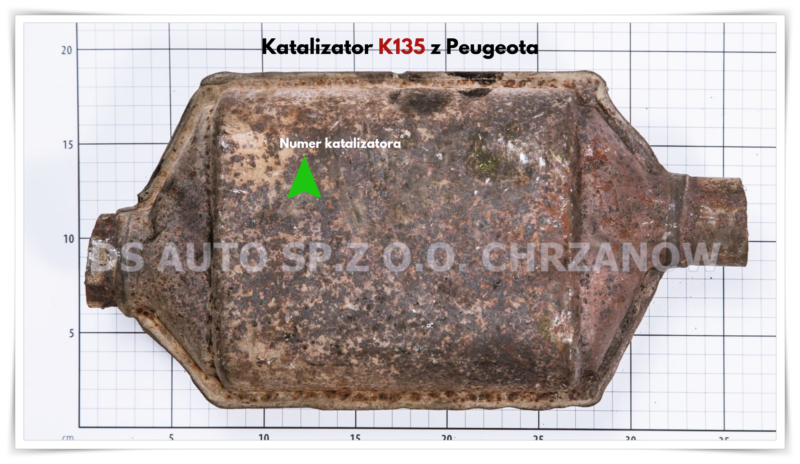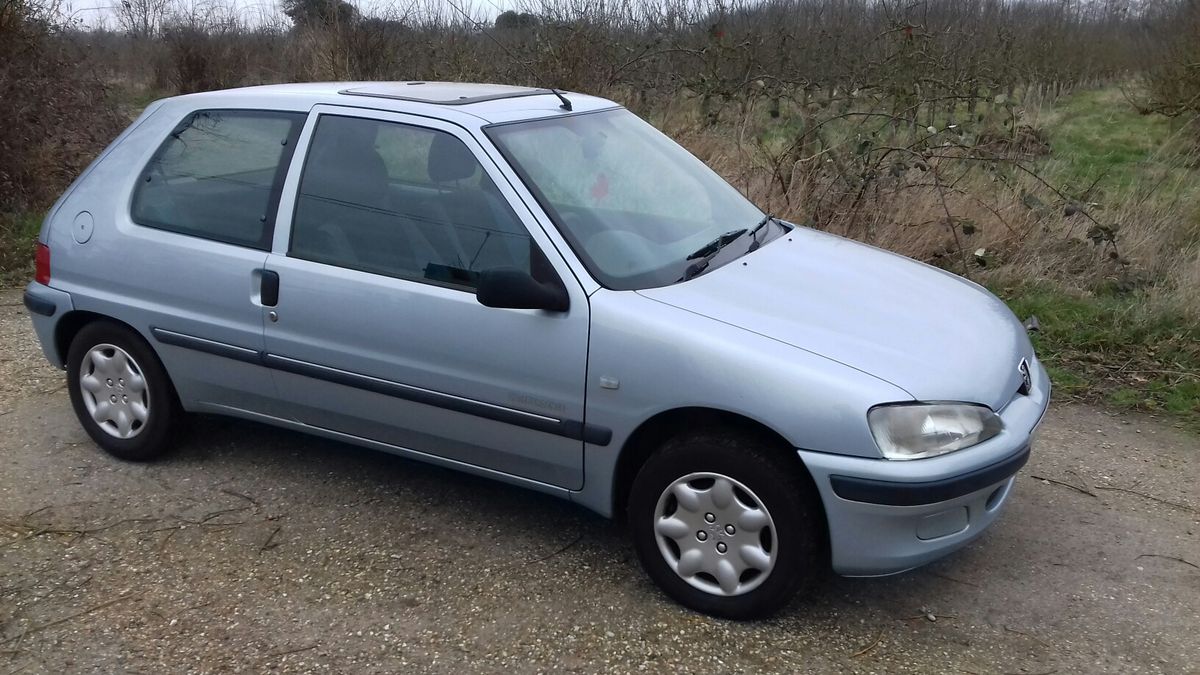Catalyst number K 135 was used in Peugoet cars, mainly in the model 106 in the petrol version 1.1. The use of this catalyst had its time in 1998.
The second model in which he used the promotional catalyst model was the model 206 2.0 HDI diesel version in the years of production from 1999-2016. The catalyst has a small format, approx. 36 cm long. Its shape is rectangular, but the ends are characterized by a trapezoidal shape with round outlets. You can check the current price for this catalyst on model page.

Peugeot 106 is a passenger car, urban class, classified into segment A. Its production was carried out in 1991-2003.
The purpose of the production of this car was to replace the Peugeot 104 model, as well as gradually replace its older sister version 205.
The first production phase was distinguished by the cubic appearance of the vehicle, strongly reminiscent of the style and production technique for the Citroen AX car. Peugeot 106 became a strong competitor for Renault Clio, whose production began a year before the launch of the 106 model.
After a decade since the release of the first cars, Peugeot 106 achieved considerable commercial success in terms of sales, which had the effect of expanding car production with a 5-door version.
The interior of this model, despite its small dimensions, is quite spacious.
While in the front we can count on a comfortable ride, the rear passengers can complain about the small space. The trunk capacity is only 215 liters, so there is no reason to store a lot of equipment there.
The advantage of the vehicle is good suspension, as well as stability and maneuverability of the vehicle, and most importantly, the user can count on low operating costs,
Due to several production shortcomings, the Peugeot 106 underwent modernization in 1996. During the changes, the focus was on changing the style of the body, as well as the mechanical structure, which in its style referred to the Citroen Saxo car. The introduction of fuel injection into each model turned out to be a significant change.
The most popular power unit was the 1.1 engine in gasoline version with a capacity of 1124 cm3 and 60 hp. Within 13.7 seconds, the car can reach a speed of 100 km / h and its maximum speed is 165 km / h. Operating costs are as follows 6.4 l / 100 km.
K135 catalyst was used in the car with the technical specifications of the vehicle described above, during production in 1998.

After the debut of the new Peugeot 206 in 1998, there was a decline in sales of the 106 model, and in 2003 the production of this model was finally completed.
Peugeot 206 immediately debuted in two door versions using a hatchback body, as well as with the possibility of purchase in several engine versions: gasoline with a capacity of 1124 cm3 and 60 hp, 1360 cm3 and 75 hp and 1560 cm3 and 90HP,
the diesel version was distinguished by 1868 cm3 capacity and 70 HP,
and a year later came the sports version called S16 with a 1997 cc engine and 135 hp.
There was also a SW version – station wagon, in some places in the world since 2005 you could also meet the sedan version.
In 2000, the 2.0 HDI diesel engine with a capacity of 1997 cm3 with common rail technology and 90 HP engine power appeared. Our promotional catalyst appears on models with this specification.

Peugeot 206 did not stop only on the motor development of the vehicle. The distinction was also the introduction to the world roads of the 2-door cabrio-coupe model, which took its form thanks to the electric folding roof.
The wide range of the model has made the 206 model the most popular model in automotive history.
Although it was hard for him to replace his predecessor (model 205), such arguments as a reasonable price, driving comfort and unique design caused that the goal was achieved.
In 2003, Peugeot 206 underwent a facelift, where the modernization were taken lights and headlights and elements of the front belt. There were also better vehicle finishing materials and enhanced interior fittings.
Another modernization of the car took place in 2009, which also included an addition to the model name namely, Peugeot 206+. The changes mainly concerned the car body, as well as the front bumper and lamps, which were to refer to the then Peugeot image.
The newer version also refreshes the dashboard, making the car even more modern and inviting.
Users of this vehicle praise this model mainly for its spacious, comfortable and functional cabin, as well as well combined suspension. When it comes to negatives regarding this model, they include, for example, a small luggage volume of approx. 245l, as well as poor, plastic interior trim.
As for the failure rate of the car, it can be expected most often in lighting, wiring, a large part of Peugeot 206 requires replacement of the engine, exhausts and braking system.
Despite many imperfections and production completed in 2016, the car is extremely popular among vehicles purchased on the secondary market.
If you plan to buy this model, it is definitely worth considering the post-lifting version, which has definitely less onerous shortcomings.

 Phone number:
Phone number:  E-mail:
E-mail:  A stationary point:
A stationary point:  Getting from the customer:
Getting from the customer:  XRF analysis spectrometer:
XRF analysis spectrometer:  Valuation by numbers:
Valuation by numbers: 